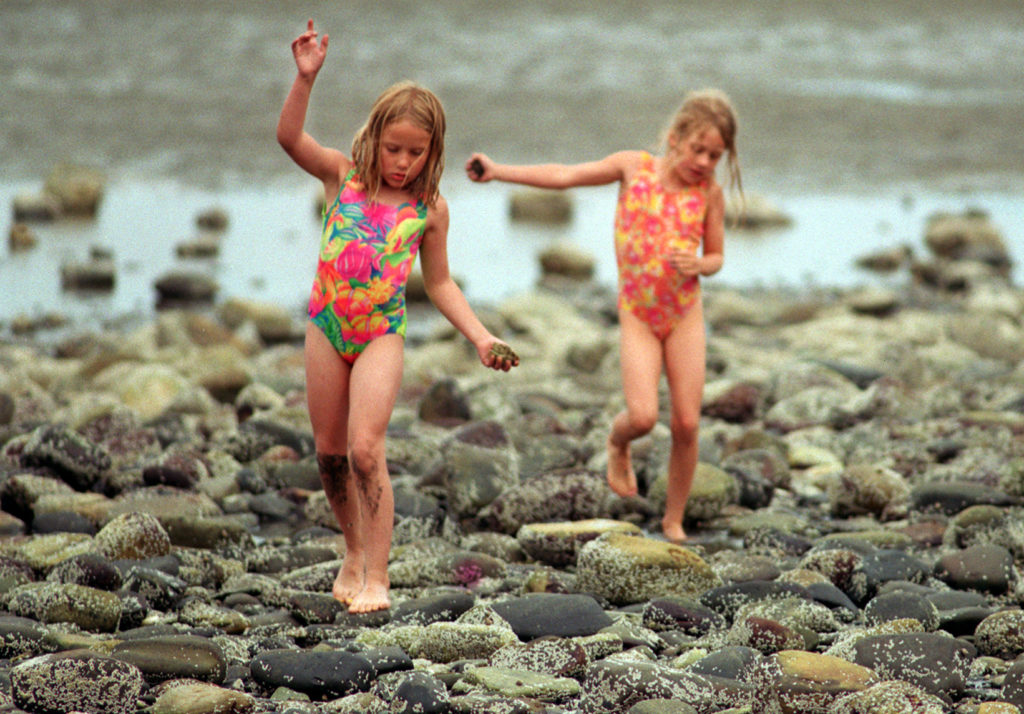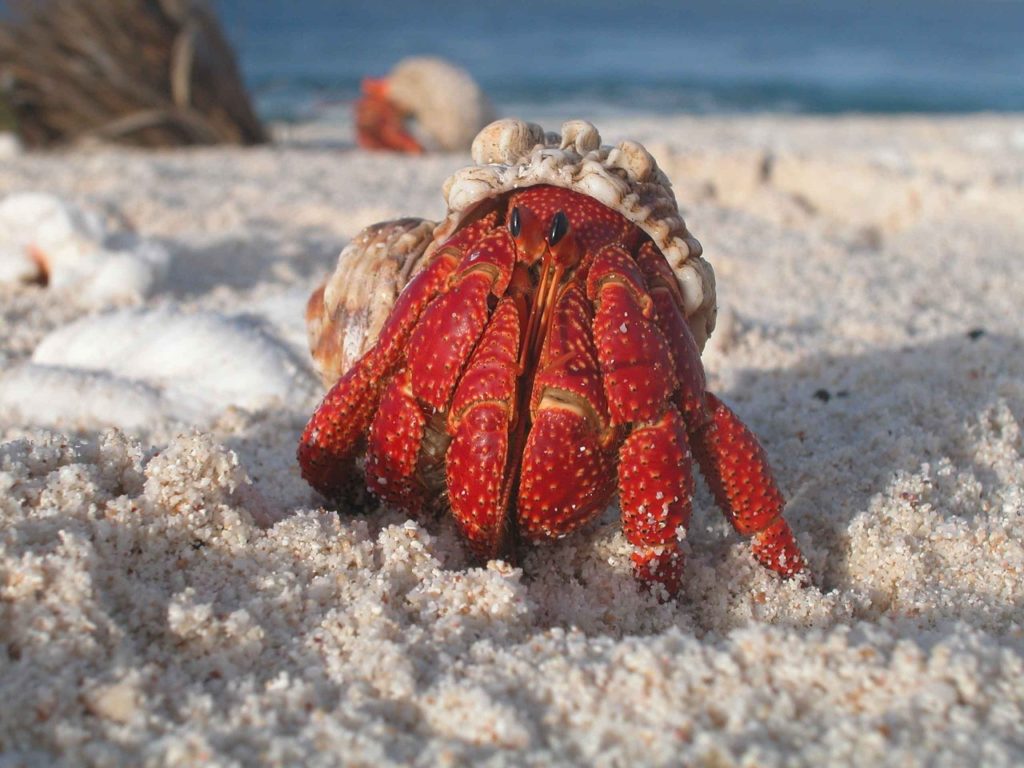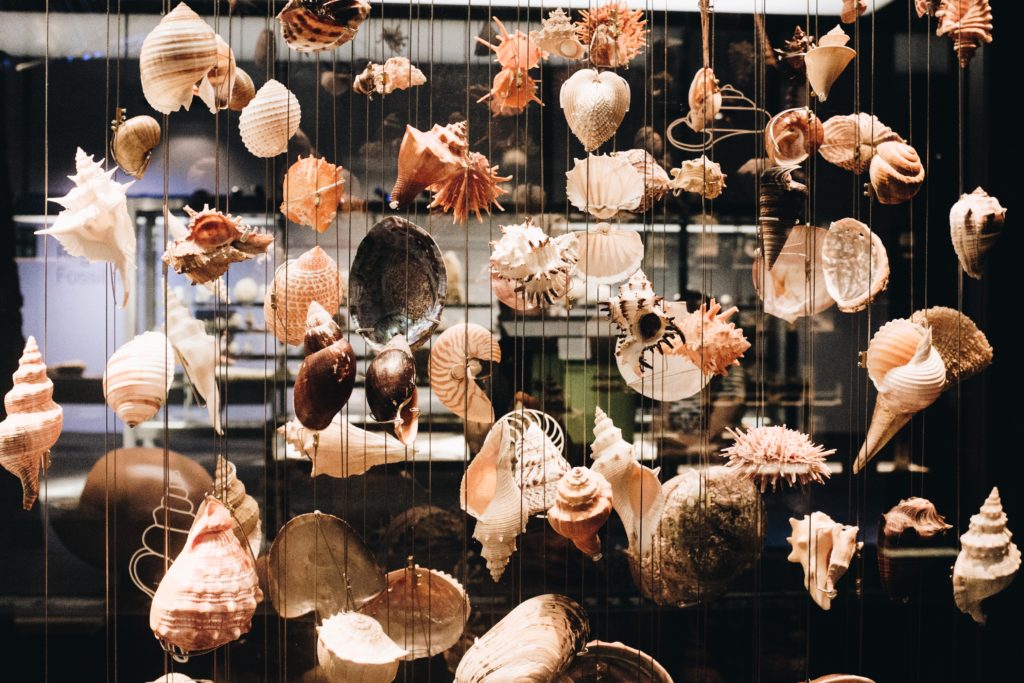Is it sustainable to collect seashells?

Curious kids and adults alike have long combed beaches for unique shells during their summers at the shore. Many people keep these shells on display in their houses for years following memorable beach vacations. But is it sustainable to collect seashells?
Some experts say that the removal of shells can impact the patterns of erosion on sensitive shorelines.
“Removal of large particles, such as shells, alters the physical characteristics of sediment,” said Michal Kowalewski, Thompson Chair of Invertebrate Paleontology at the Florida Museum of Natural History and the University of Florida. “This may lead to changes in the rates and patterns of erosion along the shoreline.”
However, other experts are quick to point out that the amount of shells removed by tourists is negligible considering how many shells are brought in by the sea, especially during storms.
“Generally speaking, the impact people can have on the volume [of shells] that’s there is really, really minimal,” said José Leal, science director and curator at the Bailey-Matthews National Shell Museum.
In fact, tourism brings more serious culprits than casual beachcombing when considering shell loss and geological damage to coastlines.
“Loss of shells from shorelines reflects many factors associated with massive tourism,” Kowalewski said. “Beach grooming by heavy machinery destroys shells. Boat landing and vehicle traffic is likewise important. This is not to say that shell collecting by millions of tourists does not have an impact, but it is not the only problem.”
Still, Leal and Kowalewski agreed that tourists can take several steps towards more sustainable seashell collecting.
Collect seashells in moderation
Though casual summer seashell collecting is unlikely to cause serious damage the shoreline, the overcollection of certain desirable shells will leave fewer on the beach for other visitors to enjoy.
“If you think about the social impact, we have many more people collecting the ‘good things’ that everyone is looking for, so there’s less of that for everyone else,” Leal said. In southern Florida, Leal said that Junonia, alphabet cone and lion’s paws are especially popular.
Kowalewski and Leal agreed that moderation is key to sustainable seashells collecting.
“Don’t collect buckets of shells, but just take a few that you really, really like,” Kowalewski said. “In fact, certain countries such as the Bahamas set limits on how much shell material can be taken back home by tourists.”
“Especially for the more uncommon shells, if you found one, try to avoid getting more of that,” Leal added. “You want to be a good citizen and leave something behind for someone else to find.”
Leave living seashells on the shore

Mollusks and crustaceans make their homes in seashells before the pretty casings wind up in beachcombers’ buckets. Sometimes, though, critters continue to occupy shells even when they wash ashore.
Leal and Kowalewski agree that beachcombers should never collect shells with a living organism still in them. In many areas, including Florida, collecting shells occupied by living organisms is illegal. A Texan tourist was arrested and jailed in 2018 for collecting 40 live queen conch shells on a Florida beach.
“Most of the time it’s pretty obvious, but people should look before they take shells home,” Leal said. “Not only do they not want to deal with the animal that will die and get smelly, but they may be breaking the law.”
Leal provided a few tips to thoroughly check to make sure nothing is still living in your shells.
“Snails have little heads with eyes and tentacles, and they will tend to retract inside the shell if disturbed,” Leal said. “If it’s a clam or a bivalve or a quahog, if it’s closed, there’s a live animal in there. Another way to tell is by weight. There is more weight to a shell that has a living animal inside.”
“I would also double check snail shells [to see] if they are not inhabited by hermit crabs,” Kowalewski added.
Avoid shells of protected species or from protected lands
Especially if you are traveling internationally, do not collect shells from any protected species, even if the animals living in them are long gone.
“There are some species that nobody can collect because they are protected,” Leal said. “You cannot pick it up or travel with it across international borders because even the dead shell is forbidden from traveling.”
Leal said a prime example of such internationally protected species is the queen conch. The marine mollusk with the elegant pink shell is listed in the Convention on International Trade in Endangered Species, an international agreement between governments administered through the United Nations Environment Program to protect threatened species from international trade and trafficking.
Aside from protected or endangered species, Leal said to never collect shells in National Parks or federally protected lands that prohibit the removal of any natural materials. Some countries, like Costa Rica, prohibit the removal of shells altogether.
Leal said if you are traveling and are not sure what the rules are about collecting shells, you can request the information from the country’s governmental division on environmental protection or consult tourism bureau websites.
Do not buy seashells from gift shops

The old tongue twister says that she sells seashells by the seashore, but you should not buy them.
“Shells in gift shops are often exceptionally beautiful because these shells often come from animals that were collected alive,” Kowalewski said.
With a few exceptions, Kowalewski said to skip souvenir shopping for shells in beach gift shops for the sake of sustainability.
“I would definitely refrain from buying shells from gift stores unless it is obvious from the appearance of shells that they were collected dead,” Kowalewski said. “For example, if shells have sponge borings or encrustation on their inner sides, they were almost certainly collected dead.”
